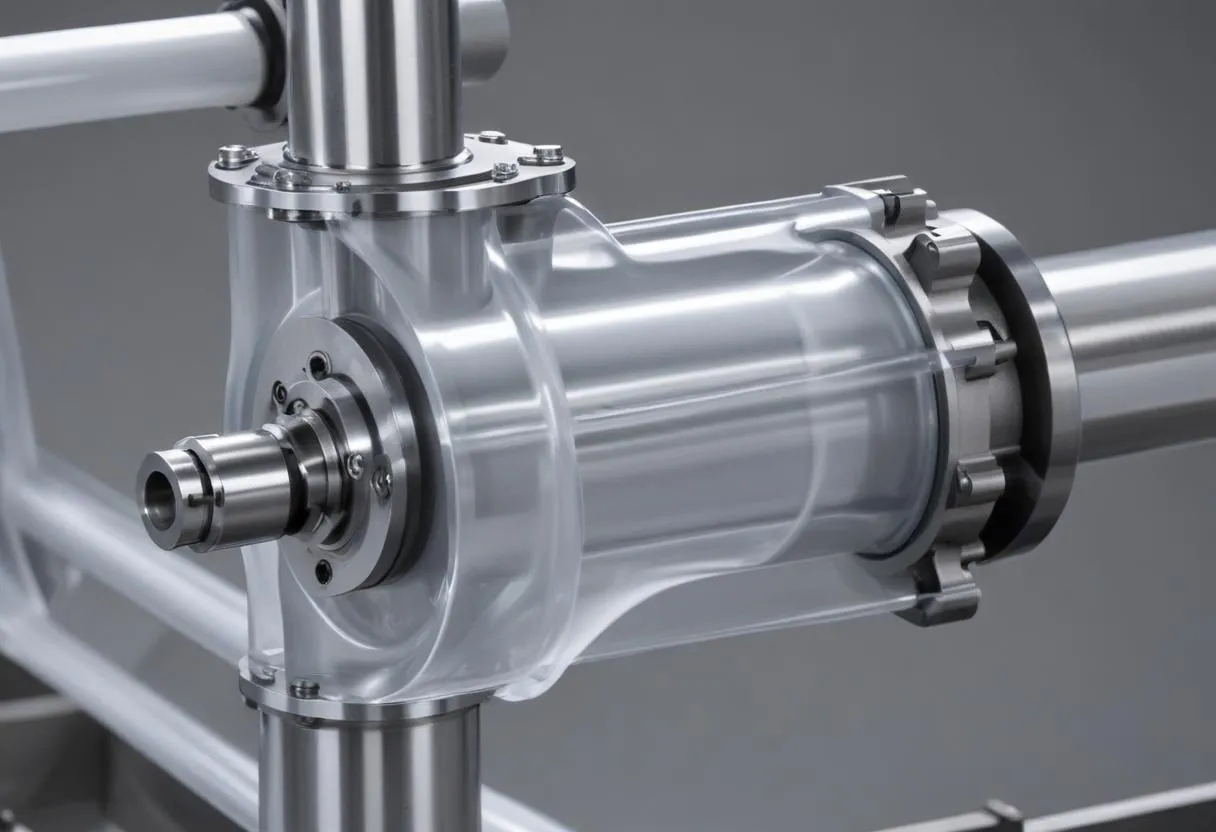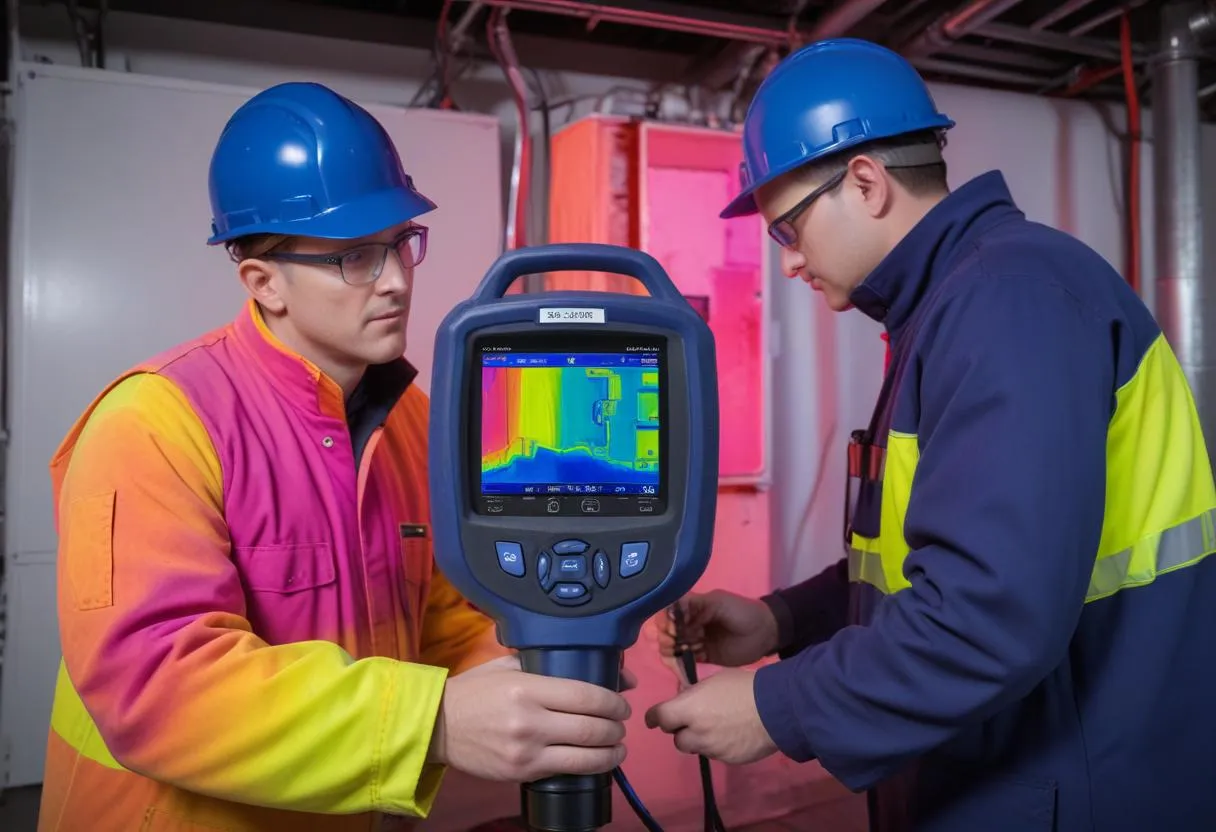 Positive displacement (PD) pumps function by alternately filling a fixed-volume chamber and then displacing that captured fluid into a discharge pipe. This unique mechanism allows them to provide a nearly constant flow rate regardless of the system pressure, which distinguishes them significantly from centrifugal pumps, where flow can vary based on pressure changes.
Positive displacement (PD) pumps function by alternately filling a fixed-volume chamber and then displacing that captured fluid into a discharge pipe. This unique mechanism allows them to provide a nearly constant flow rate regardless of the system pressure, which distinguishes them significantly from centrifugal pumps, where flow can vary based on pressure changes.
Types of Positive Displacement Pumps
PD pumps are categorized into two main types: rotary and reciprocating. Each type is well-suited to specific applications based on viscosity, pressure, and capacity requirements.
| Type | Mechanism | Common Uses |
|---|---|---|
| Rotary | Uses gears, screws, or lobes | Handling thick fluids, high-capacity flows |
| Reciprocating | Piston or plunger driven | High-pressure applications |
Operational Principles
The operation of PD pumps involves several key principles:
- Sealing: Effective sealing between the moving parts and the pump casing is crucial to prevent fluid slippage back to the suction side.
- Displacement: The pump displaces fluid by mechanically expanding and then decreasing the volume of the pump chamber.
- Suction and Discharge: The suction phase draws fluid into the pump chamber as the volume expands, and the discharge phase pushes it out as the volume contracts.
This cyclical process ensures that the pump delivers fluid at a rate proportional to its speed of operation, making flow control predictable and consistent. The fixed displacement nature of these pumps means that changes in the discharge pressure have minimal effect on the flow rate, as long as the pump’s mechanical capacity is not exceeded. However, it’s essential to manage the net positive suction head available (NPSHA) to avoid cavitation, which can cause significant wear and reduce efficiency.
Applications and Selection
Selecting the appropriate PD pump requires understanding the specific demands of the application, including:
- The nature of the fluid (viscosity, corrosiveness, and particulates).
- Required flow rate and pressure.
- Temperature and chemical properties of the fluid.
- Environmental and operational conditions such as available space and power sources.
Given their ability to handle a variety of challenging conditions, PD pumps are widely used in industries ranging from chemical processing to oil and gas, and from wastewater treatment to pharmaceuticals. Their robust design makes them ideal for applications that involve high pressure, accurate dosing, or handling viscous and abrasive fluids.
Relationship between flow and pressure
In the realm of Positive Displacement (PD) Pumps, understanding the relationship between flow and pressure is fundamental for optimizing system performance. Pressure in a PD pump system is primarily influenced by the resistance or the load that the pumped fluid encounters after leaving the pump. Contrary to centrifugal pumps, the flow in PD pumps is almost inelastic to changes in back pressure, given that their operational mechanism is based on displacing a fixed volume per cycle.
The flow rate in a PD pump is determined by the speed of the pump and its displacement volume. Here is a formula used to determine this relationship:
Q = n × V × ηv
where Q is the flow rate, n is the rotational speed of the pump, V is the displacement volume per rotation, and ηv is the volumetric efficiency of the pump.
| Parameter | Description |
|---|---|
| Q (Flow Rate) | The volume of fluid the pump transfers per unit of time |
| n (Rotational Speed) | How fast the pump operates, typically in rotations per minute (RPM) |
| V (Displacement Volume) | Volume of fluid displaced with each rotation or cycle |
| ηv (Volumetric Efficiency) | Efficiency with which the pump converts the input mechanical energy to move the fluid |
Given the constant displacement nature of PD pumps, the output flow is ideally independent of the discharge pressure. However, practical limitations such as pump efficiency, wear, and tear, and leakage can cause slight variations in flow, especially under varying pressure conditions. This leads us to consider the concept of slip—the leakage of fluid from the discharge side back to the suction side, which inherently depends on the differential pressure across the pump.
- Slip: Increases as the discharge pressure rises and the sealing between internal components becomes less effective with wear.
- Pump Wear: Over time, diminishes the ability of the pump to maintain high volumetric efficiency, especially under high pressure.
These factors make it essential for operators to periodically assess pump performance and adjust operational parameters to maintain optimal efficiency. Moreover, the effective management of the suction conditions is critical. Ensuring that the pump receives the fluid at a proper rate and pressure to avoid cavitation is crucial for maintaining the integrity and longevity of the pump.
By understanding these dynamics, stakeholders can better predict pump performance, manage maintenance schedules, and optimize system configuration for both energy efficiency and operational reliability. This knowledge supports processes requiring precise flow control, such as in dosing applications in the pharmaceutical industry, or in high-pressure operations like hydrocarbon processing.
Optimization techniques for performance improvement
 To effectively enhance the performance of positive displacement (PD) pumps, various optimization techniques can be applied. These strategies focus on maximizing efficiency, reducing wear and tear, and accommodating changing operational demands.
To effectively enhance the performance of positive displacement (PD) pumps, various optimization techniques can be applied. These strategies focus on maximizing efficiency, reducing wear and tear, and accommodating changing operational demands.
Maintenance Optimization
Regular maintenance is crucial for PD pumps to perform efficiently over time. Optimization of maintenance practices involves setting schedules based on actual usage and condition monitoring rather than fixed intervals. Predictive maintenance techniques, such as vibration analysis, thermal imaging, and lubricant analysis, can point out potential failures before they cause system downtime.
Speed Adjustment
Adjusting the speed of the pump can significantly impact both flow rate and pressure. Utilizing variable frequency drives (VFDs) allows operators to fine-tune pump speeds in response to varying system demands without compromising on performance. This not only helps in achieving desired flow rates but also reduces energy consumption and mechanical strain on the pump.
Seal Selection and Maintenance
The choice and upkeep of seals in PD pumps are vital for minimizing slip and leakage. High-quality seals tailored to the pumped fluid’s properties can endure harsh conditions and prevent fluid from cycling back to the suction side. Improved seal designs, such as double mechanical seals or bellows seals, can further enhance performance by providing robust barriers against leakage.
Materials of Construction
Optimizing the materials used in the construction of PD pumps can lead to better durability and efficiency. For abrasive or corrosive fluids, selecting pumps made from materials such as stainless steel or hardened alloys can reduce wear and tear, extending the lifespan of the pump. Additionally, applying surface treatments or coatings may decrease internal friction, leading to improved volumetric efficiency.
Energy Efficiency Improvements
Energy efficiency in PD pumps can be improved through several strategies, including optimizing the motor and drive systems, implementing energy recovery systems, and reducing hydraulic losses. Advanced control systems can dynamically adjust parameters such as flow and pressure to the most energy-efficient levels based on real-time data.
System Configuration and Integration
Proper system configuration and integration involve ensuring that the PD pump’s specifications match the needs of the broader system. By analyzing the entire system’s hydraulic profile and optimizing the pipeline design, operators can reduce pressure losses and improve overall system efficiency. Integrative diagnostic tools can help monitor and adjust system parameters to prevent overloads and optimize flow paths.
- Flow Matching: Tailoring the output flow of PD pumps precisely to the demand at any given time to avoid excess energy use.
- Pressure Control: Implementing advanced pressure control systems to adjust pressures automatically and improve system response.
By employing these optimization techniques, operators of PD pumps can achieve significant improvements in performance and efficiency. Regular updates to the equipment and adopting new technologies in monitoring and control can lead to sustained operational excellence and reduced operational costs. Properly optimized PD pumps are fundamental in ensuring continuous, reliable, and efficient operation in various industrial applications.